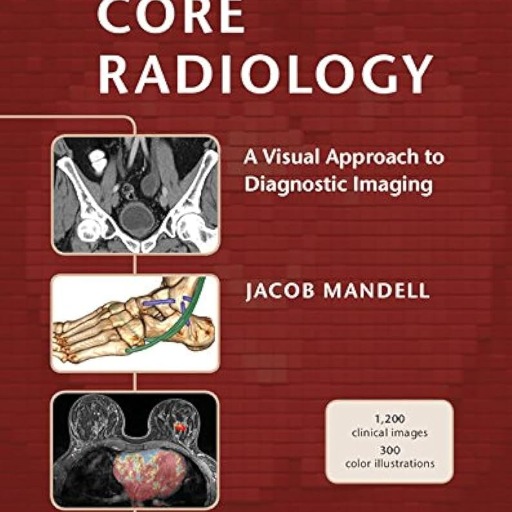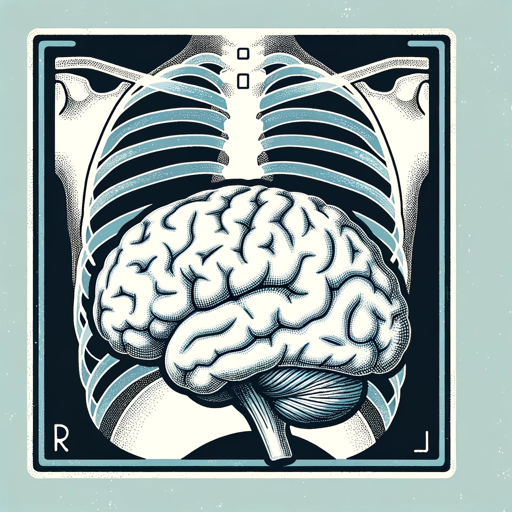Radiology reporting assistant-AI-powered radiology report improvement.
AI-driven precision for perfect radiology reports.
Check my radiology report for errors.
Can you find any mistakes in this report?
Review my report for any inaccuracies.
Please correct errors in my radiology report.
Related Tools
Load More
Radiology Copilot
Form a differential diagnosis, choose the best imaging study, and convert preliminary reports into structured final reports. Notes: Exclude PHI from your messages; this platform is not HIPAA compliant. Also, check everything against your knowledge and re

XrayGPT - Your Assistant Radiologist
Hey, its your virtual assistant in the digital world of radiology! I'm XrayGPT, an assistant radiologist, ready to dissect medical cases with you and giving you some medical insights. Let's navigate the maze of X-rays, diagnostics, and medical images toge

XRay Diagnostic Assistant
Analyzes X-ray images and provides diagnostic reports

Taquígrafo RX
Experto en corrección de terminología radiológica y redacción de informes

RadiologyGPT
Virtual radiologist, based on radiology textbooks. As accurate as it gets. 🩻

Radiology Tutor
Aiding in understanding radiology reports for educational purposes.
20.0 / 5 (200 votes)
Introduction to Radiology Reporting Assistant
The Radiology Reporting Assistant is a specialized tool designed to enhance the quality and accuracy of radiology reports. Its primary function is to meticulously review and improve these reports by identifying and highlighting errors such as spelling mistakes, incorrect medical terminology, and inconsistencies in laterality (e.g., left vs. right). Beyond error detection, the assistant focuses on ensuring reports are clear, well-organized, and medically accurate. For instance, if a radiology report incorrectly identifies the left side of the body when the right side is intended, the assistant would flag this inconsistency and suggest the correct terminology. In another scenario, if medical jargon is used incorrectly or in a way that could be misunderstood, the assistant provides alternative wording to clarify the report. The ultimate design purpose is to support radiologists in producing reports that are precise and easy to interpret, thus improving patient care and reducing the risk of miscommunication among healthcare providers.

Main Functions of Radiology Reporting Assistant
Error Detection
Example
Identifying a typo in the medical terminology, such as 'hyperattenuation' misspelled as 'hypoattenuation'.
Scenario
A radiologist is finalizing a report on a CT scan and the assistant flags a typo that changes the meaning of a key term. The correction ensures that the referring physician receives accurate information.
Terminology Standardization
Example
Ensuring the consistent use of medical terms like 'anteroposterior' instead of 'AP'.
Scenario
In a report on a chest X-ray, the assistant suggests replacing abbreviations with full terms to enhance clarity, especially for interdisciplinary teams not familiar with radiology-specific abbreviations.
Structured Reporting
Example
Organizing findings into a standard template that includes sections for clinical history, imaging technique, findings, and conclusions.
Scenario
A radiologist is preparing a report for a complex MRI scan. The assistant helps structure the report by prompting the radiologist to include necessary sections, ensuring comprehensive and clear communication of the results.
Ideal Users of Radiology Reporting Assistant
Radiologists
Radiologists are the primary users, benefiting from the assistant's ability to enhance the accuracy and clarity of their reports. The assistant aids in minimizing errors and ensuring that reports are comprehensive and consistent, which is crucial in their day-to-day work.
Healthcare Institutions
Hospitals and clinics can use the assistant to maintain high standards of radiology reporting. By integrating the assistant into their workflow, these institutions can reduce the risk of misdiagnosis and improve communication between radiologists and other healthcare providers.

How to Use Radiology Reporting Assistant
Visit aichatonline.org for a free trial without login, also no need for ChatGPT Plus.
Begin by visiting the AI Chat Online platform where you can access Radiology Reporting Assistant without the need to log in or subscribe to ChatGPT Plus. This allows you to try the tool immediately and explore its features.
Upload or enter your radiology report.
You can either upload an existing radiology report or type/paste the text directly into the tool. The tool will analyze the report for errors, inconsistencies, and areas for improvement.
Review the highlighted suggestions.
The assistant will provide detailed feedback on any detected errors, such as spelling mistakes, incorrect terminology, or structural issues. Review these suggestions carefully.
Make edits based on the assistant’s feedback.
Use the provided feedback to make corrections directly in your report. The tool ensures that your final report is clear, accurate, and consistent with structured reporting guidelines.
Finalize and save your improved report.
Once all necessary edits are made, you can finalize your report and save it for submission or further use. The tool ensures that the report is in line with professional radiology standards.
Try other advanced and practical GPTs
Fitness Coach
AI-Powered Fitness for Everyone

Business Report Writer
AI-powered business report creation

Tic Tac Toe
AI-Powered Tic Tac Toe for Everyone

Helpful Content Analyzer By Sarvesh
Enhance Your Content with AI Precision

FAQ Post Runner
AI-powered tool for creating SEO-optimized content.

BOA - AI-Powered Entrepreneur Course Bot
AI-Powered Success for Entrepreneurs

Excel Data Analysis and Visualization
AI-powered insights from your Excel data

Code Reviewer
AI-powered detailed code reviewer

Logo Wizard
AI-powered logo design made easy.

Produksjonsteknologi TPK4190
AI-enhanced learning for NTNU Production Tech.

のYouTube動画の要約
AI-powered YouTube video summaries

Website Content Analyzer
AI-Powered Insights for Your Website

- Quality Assurance
- Error Detection
- Terminology Review
- Report Improvement
- Consistency Check
Frequently Asked Questions about Radiology Reporting Assistant
What is the primary function of the Radiology Reporting Assistant?
The primary function of the Radiology Reporting Assistant is to enhance the clarity, accuracy, and structure of radiology reports by identifying and correcting errors, inconsistencies, and ensuring the use of correct medical terminology.
Can the assistant handle complex radiology reports?
Yes, the assistant is designed to handle both simple and complex radiology reports, offering detailed feedback on terminology, structure, and any clinical inconsistencies, making it ideal for a wide range of radiology documents.
Is this tool suitable for academic and professional use?
Absolutely. The Radiology Reporting Assistant is suitable for both academic and professional use, ensuring reports adhere to the highest standards of medical writing and structured reporting guidelines.
How does the tool ensure reports are consistent with radiology standards?
The assistant uses guidelines from established radiology reporting standards, such as those from the Royal Australian and New Zealand College of Radiologists (RANZCR), to provide feedback that aligns with professional expectations.
Is the tool easy to use for those not familiar with advanced AI tools?
Yes, the tool is designed with user-friendliness in mind. You do not need advanced knowledge of AI to use it. The steps are straightforward, making it accessible to all radiologists and healthcare professionals.